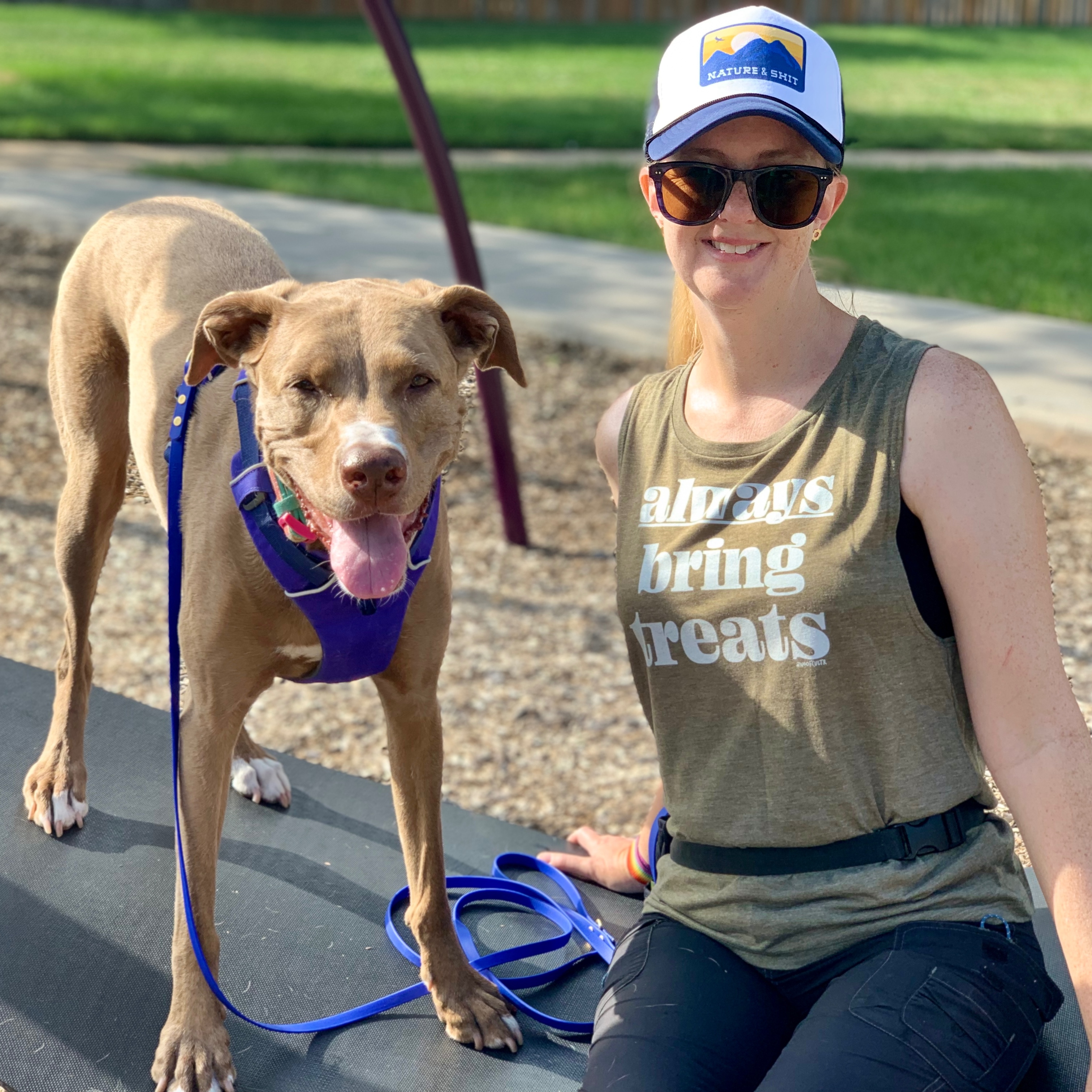Have you ever heard the term "Calming Signal"?
The term was coined by trainer Turid Rugaas to describe body language signals used by dogs to calm or diffuse another party. She and a colleague spent hundreds of hours studying and observing body language in dogs to assess what body language was used to communicate between dogs and what was less useful.
Body language had been studied in wolves and some other wild dogs for decades prior and you may have even read or heard the term ‘cut-off signals’ as it was popularly used to describe the body language wolves used to cut off aggression in other wolves. Turid however did not feel that the term ‘cut-off’ was an appropriate term to use for dogs, as their body language was often being used as prevention – to avoid threats and to achieve a calming effect, negotiating rather than cutting-off behavior entirely. Additionally dogs have evolved to communicate with both dogs and humans, when we know how to listen.
Turid felt the body language signals could be used in several ways: first, dogs calming themselves when feeling stressed or uncomfortable, additionally as an attempt to make others feel comfortable, and as an indication of friendly and non threatening intent with early interaction to avoid conflict and enable dogs to make friends with others more quickly.
You can find more about Turid's observations about dog body language in a book entitled “On Talking Terms with Dogs : Calming Signals”.
A few common examples of Calming Signals listed in Turid’s book are:
- Head Turn Away
- Whale Eye
- Freezing
- Yawning
- Lip Lick
Many of these calming signals are similar to what many professionals in the dog behavior world have also come to call:
Displacement Behaviors
Displacement behaviors are normal behaviors displayed out of context. They indicate conflict and anxiety. The dog wants to do something such as fight, retreat, defend territory, or more, but he is suppressing the urge to do it. He displaces the suppressed behavior with something else such as a lick or a yawn.
Other common displacement behaviors include
- Sudden Scratching when not itchy
- Sudden need to sniff an area
- Sudden Biting at paws or other part of body
- Wet dog shake (when not wet)
- Laying down and exposing belly
- Panting when not hot
- Hiding or trying to escape
These are all things that dogs do naturally so it’s important to look at context to determine if and why the dog is feeling anxious. Whether you call it a calming signal or a displacement behavior isn’t of great importance in my opinion, unless you are writing a paper. What is important is helping your dog by assessing their level if anxiety. If you observe one or two of the behaviors listed here or in the graphic above, keep a close eye on your dog and try to determine what (or who) in their environment may be causing the fear or anxiety. If necessary remove them from the environment or provide comfort in the way of a game, toy, or other some other relief such as a safe space on your lap if that is what they prefer. If the dog is repeating these signals or increasing levels of any of the signals listed, it is best to give your dog space from whatever may be causing the stress. The best way to help dogs understand that they do not need to escalate their behavior is to listen to what they are already trying to tell us.
Dogs should always have a safe space in the home and should never be forced to interact with strange dogs, people, children in public or have their personal space invaded when they have toys, food or high value objects.
Some more extreme body language to look out for that indicates that your dog may be extremely afraid or anxious
- Shaking/Trembling
- Tucked Tail / Pinned Ears
- Very rapid panting
- Barking and retreating
- Barking and lunging
- Growling
- Snapping
If you can learn to read early signs of stress in your dog you can prevent dangerous situations that may lead to dog bites.
Image courtesy of Lili Chin
Additional Resources:
Blog on Displacement Behaviors by Patricia McConnell
doggonesafe.com - Signs of Anxiety

